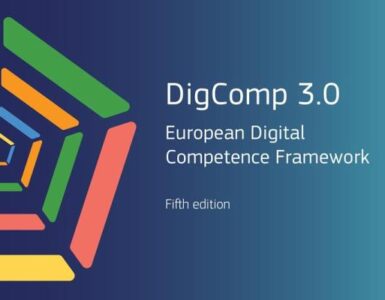by Sofia Almeida and Inês de Castro, IPS, Portugal.
Critical Awareness in a Digital World
Contemporary society is immersed in a digital swirl where headlines, videos, and social
posts arrive faster than ever. The rapid pace and overwhelming volume of information make
it increasingly challenging for individuals to discern fact from fiction. The dissemination of
false information and disinformation can be readily facilitated by this never-ending flood
which furthers societal division and manipulation.
In this demanding environment, focus proves to be key to enhancing both individual and
collective capacities to recognise reliable sources, confirm information, critically engage
with a range of viewpoints, and make well-informed decisions through media literacy skills.
According to the EU Media Literacy Expert Group (2016), such a concept refers to “all
technical, cognitive, social, civic, and creative capacities that allow a citizen to access, have
a critical understanding of, and interact with media”. In practice, it’s the essential toolkit that
enables to spot manipulated images, question sensational stories, and contribute
meaningfully to public debates.
Countries like Finland, which rank first in the European Media Literacy Index (2023),
demonstrate the payoff of a systemic approach: it embeds media literacy in compulsory
education and champions lifelong-learning programmes, promotes public campaigns on news verification, and intergenerational workshops boost trust in information sources. Still, new challenges arise as AI tools generate photorealistic audio or video, making falsehoods harder to spot.
Media literacy must therefore evolve continuously, blending fact-checking techniques with
ethical reasoning, creative storytelling, and technical know-how to empower informed
participation in democracy.
Disconnected Youth: The Overlooked Digital Divide
Young people create, play and interact online from an ever-younger age, using digital
technologies for education, entertainment, social contact and participation in society.
Hence, media literacy, when introduced in late childhood or early adolescence, can act as
an “inoculation” against harmful media influence, by equipping them to critically evaluate media and make informed decisions.
For youths flagged or adjudicated for committing acts against the law, these challenges may
be compounded by restricted internet access, limited digital education, and a lack of social
support or resiliency factors. The UN Convention on the Rights of the Child (Article 28(3)) calls for cooperation to eliminate ignorance and illiteracy while promoting access to modern teaching methods, highlighting the need for inclusive education initiatives that extend to justice-involved youth.
These principles underscore the importance of media literacy as a fundamental component
of rehabilitation, equipping youth in custody with the tools necessary for reintegration. For
youth in custody, developing media literacy is not just an educational goal – it is a critical
safeguard against the risks they face upon release. Without fundamental media literacy
skills, these young individuals are more vulnerable to misinformation, online manipulation,
and digital exploitation, which can reinforce cycles of exclusion and poor decision-making. Media literacy serves as a pathway to empowerment, enabling them to critically assess media, navigate digital spaces safely, and make informed choices. This, in turn, facilitates their reintegration into society, helping them adapt to modern life and reducing the likelihood of recidivism.
Literacy: A Responsibility, not a Bonus
Misinformation, algorithmic bias, and digital exploitation are not abstract concerns – they
are immediate and tangible risks that can influence behaviour, identity, and opportunity. If
communities expect these individuals to re-enter society as informed, responsible citizens,
it must be ensured that they are equipped with the cognitive and ethical frameworks to
navigate today’s media landscape.
This invites deeper reflection: What kind of digital citizens are we preparing them to
become? Are we, as institutions and communities, doing enough to ensure they are not left
behind in a rapidly evolving information society? And perhaps more fundamentally: what
does it say about our commitment to justice and inclusion if we fail to extend these
essential competencies to some of the most vulnerable youth?
Media literacy for youth in custody is not a luxury; it is a right and a collective responsibility.
As we imagine more humane and future-facing justice systems, integrating media literacy
into rehabilitation is not just a forward-thinking strategy, it is a responsibility toward
ensuring that these young people are not further excluded in a world where access to
information and the ability to engage critically with it are central to inclusion. Such
investment contributes to a more resilient and informed society, where all members are
empowered to think critically, act responsibly, and engage constructively in public life.
In this light, media literacy becomes not only a tool for rehabilitation but a preventive act of
social justice.
Authors:

Sofia Almeida, Consultant & Researcher, (IPS), Portugal

Inês de Castro, Head of Risk Prevention & Criminogenic Intervention, (IPS), Portugal














